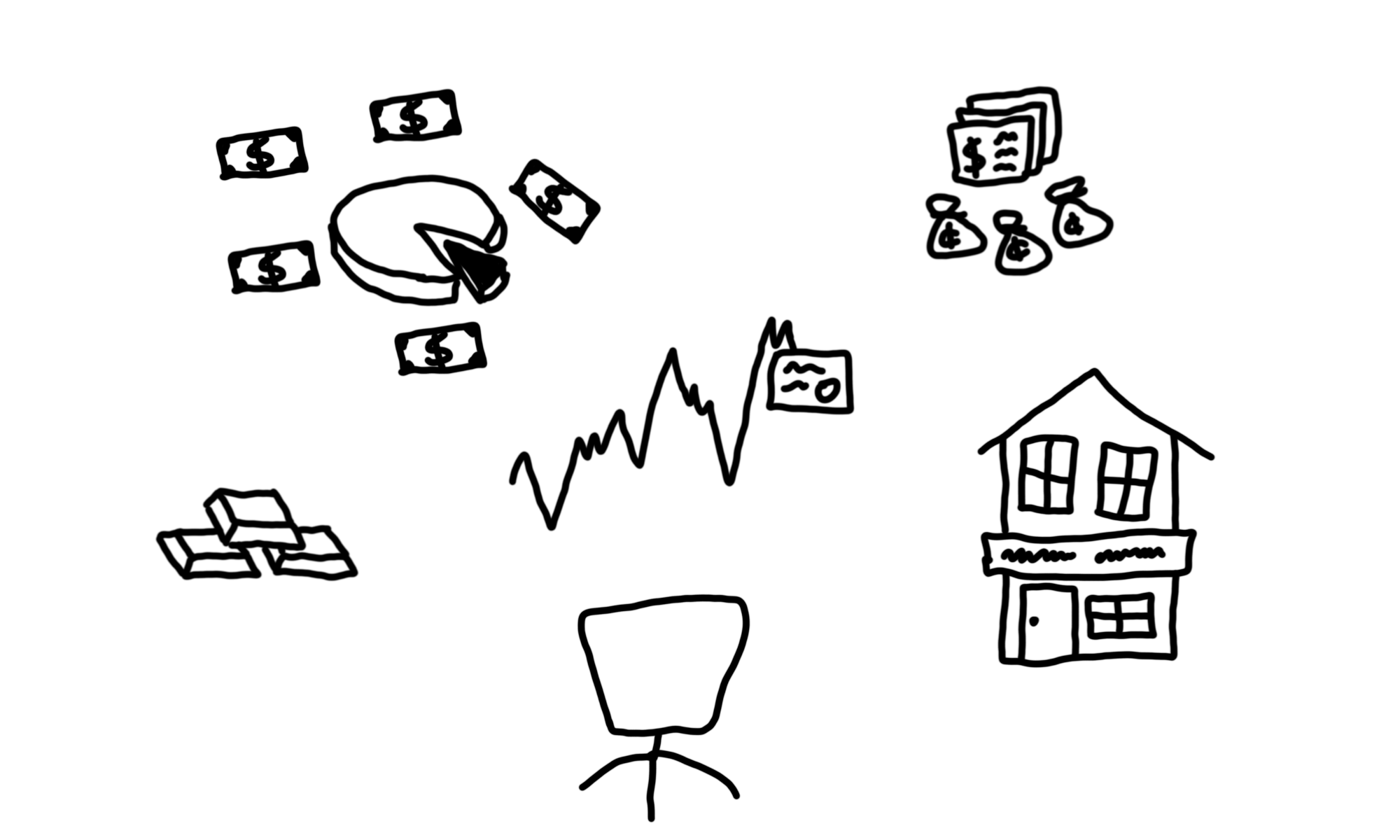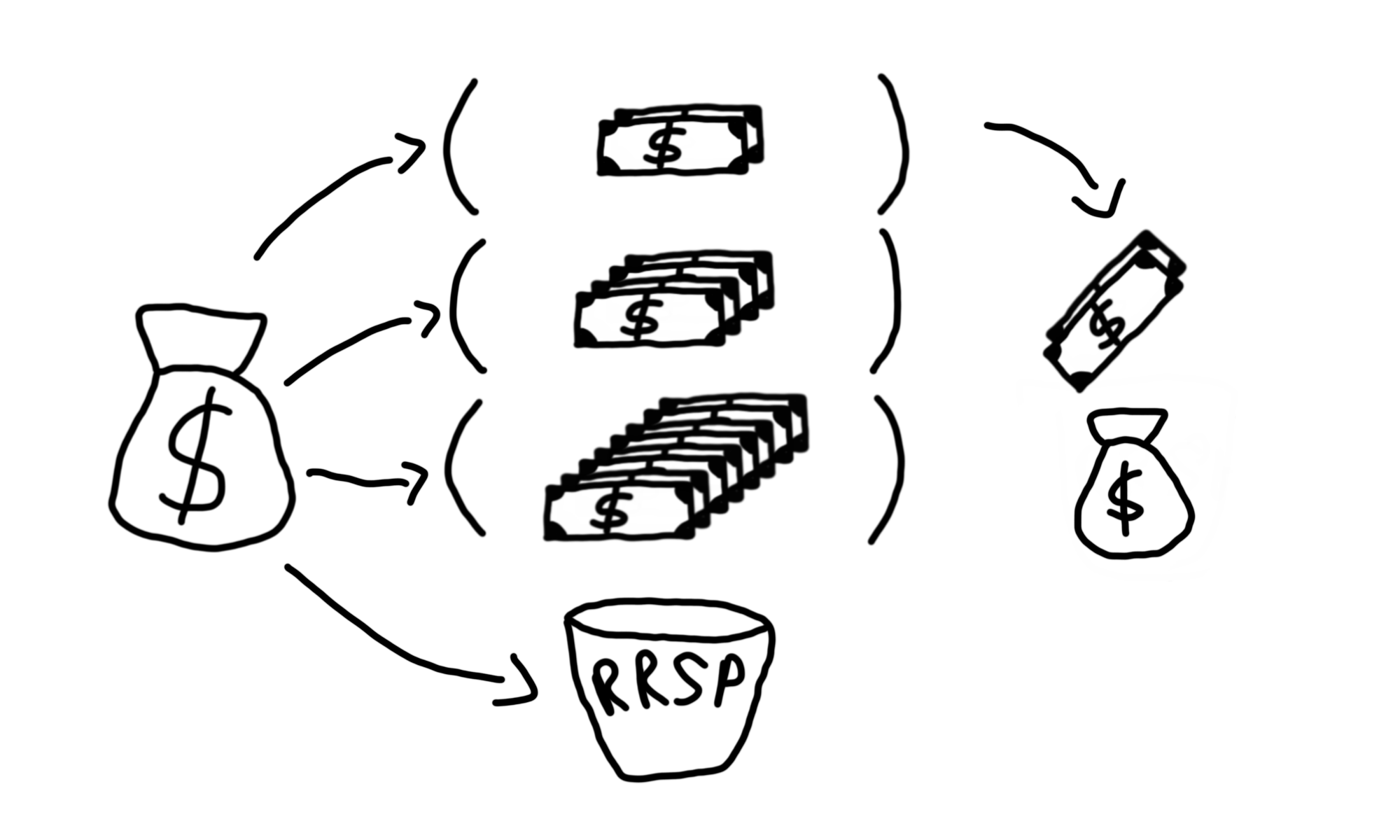Contents:
There are so many things you can buy with your hard earned money that are more interesting and fun than investments. Especially considering that most of them provide some kind of immediate satisfaction unlike investments that are held for the long-term (20 years or more), which aren’t appreciated until you start withdrawing their returns in retirement.
From a purely financial perspective though, they are what you want your current self to buy for your future self so that your future self can spend that money on things that bring satisfaction – like your current self does with that fancy dinner, new clothes, or latest piece of tech.
You should also think through your investment choices and reasoning carefully because even though they may be less glamorous than other purchases, they’re arguably more important.
Risk and Return
“Higher risk, higher reward” or “no risk, no reward” are two sayings you’ve probably heard at one point or another and they illustrate a central idea when it comes to investing: risk and reward are connected and generally correlated. If you purchase riskier investments there’s a chance of earning a higher return.
However, given that no one knows the future, this is more of an observation of the past being applied to the future – it’s not exact or definite but rather a guideline. This is why if you ever look up investments with charts or graphs displaying their past performance, you’ll almost always see a disclaimer line that reads something like: “past performance does not dictate future returns”. Translation: investing is risky, just because this fund did well in the past, we can’t guarantee it’ll do that well in the future.
Risk is an attempted quantification of apparent danger and in investing this refers to the danger of losing some of all of one’s investment. It can be reduced or minimized through certain practices but it’s important to remember that there’s risk involved if you choose to invest.
By comparison you could also get run over by a car while crossing the street or choke on a piece of food during dinner but those risks don’t stop you from walking or eating. They could be thought of as calculated risks, where you (sub)consciously decide that the reward (getting to the south side of the street or staving off starvation) outweighs the risk involved.
This is investing – finding the right balance of calculated risk vs reward for you as an investor.
Finding Your Risk Tolerance
How do we calculate the amount of risk that we as individuals can handle? By asking how we would react if we were to potentially lose some amount of our investment (up to 100%) – this is your risk tolerance.
The Vanguard Group (a popular investment company offering low-cost ETFs) has a questionnaire that can gauge your tolerance for risk by how you answer a few questions about certain investments scenarios. Questions about how you’d react if you lost a large percentage of your portfolio’s market value, which investment you’re likely to choose (risky with potentially higher return or lower risk), and what your investing horizon would be – to name just a few.
Your risk tolerance is an overall indicator to help guide you in choosing your investments, specifically what types of assets and in what weightings (percentages).
Asset Classes
Investments come in many different (metaphorical) shapes, each with their own attributes that make them better or worse than others for investors with certain risk tolerances.
Foundational Classes
A foundational asset class (my name for it) is a type of asset that makes up the composition of other asset classes – they are the foundation of other classes and come together to form those more abstract ones.
Stocks/Equities
Stocks are the foundational asset class on the higher end of the risky investment scale with a variable return (one that changes – not fixed). Their value is generally tied to the performance of the company they’re issued by but they’re also heavily influenced by the perception of the investors who buy and sell them on the stock exchanges daily.
The better a company does or the more people think they’re going to do well, the higher the demand for the stock and the higher the price will go. It’s not strange for some stock prices to rise or fall 5 or more percent within a day.
Dividends are a feature of some stocks and are paid per share that an investor holds. These dividend payments are not a guarantee but many large companies have made it a regular part of doing business (to attract investors and show the health and viability of the company).
Bonds
In contrast to stocks, bonds are the foundational asset on the low end of the risky investment scale and are referred to as fixed income investments (ones where the return is known and doesn’t change). Since they’re loans with almost guaranteed repayments (typically from governments and large stable companies), the risk and associated return are comparatively very low (sometimes almost 0).
In a portfolio they’re meant to offset the high risk nature of stocks by providing stable returns with little to no risk.
Foundational Asset Allocations
Portfolios are broken down into these foundational classes and what percentage they make up of the total portfolio value. The general consensus around foundational asset allocations is tied heavily to your age: the younger you are, the more you should be investing in stocks or equities – it even has a name, the Rule of 100 (or 110 or 120 – the rule is increasing as life expectancy does).
The Rule of 100 states that you should subtract your current age from 100 (or 110 or 120) and use the result as the percentage of stocks to hold in your portfolio (e.g. a 25 year old should hold somewhere between 75-95% of their portfolio in stocks – [100 or 110 or 120] - 25 = 75 or 85 or 95).
Aggregate (Bundled) Classes
An aggregate class (again, my name for it) is a type of asset class consisting of some combination of different stocks and bonds – fund companies bundle these foundational assets together and make them available as a new investment product.
Mutual Funds
Mutual funds bundle together a selection of stocks and bonds based on some criteria such as this fund from RBC that aims to hold assets that are fossil fuel free (no oil, coal, etc. related stocks). It has a mix of about 63% stocks (equities) and 37% fixed income or bonds. Mutual funds are priced usually at the end of the day – their prices don’t fluctuate during the trading day – and are usually actively managed.
ETFs
ETFs (exchange traded funds) similarly bundle together a selection of stocks and bonds based on some criteria like mutual funds. This ETF from Vanguard has a portfolio consisting of 100% stocks from companies producing consumer staples (items that people always need to buy; food, household products, soft drinks, etc.). The price of an ETF fluctuates many times in a trading day (like a stock) and are not actively managed but instead built to track an index.
Other Assets
Other assets that don’t fit into either the stock or bond categories can include physical assets like real estate property and precious metals such as gold and silver. These are generally not as common for the average investor especially if they’re just trading with a brokerage on a stock exchange.
Real Estate
Real estate (houses, condos, commercial buildings, etc.) can make up a sizeable portion of an investor’s portfolio but it’s not as easy to invest in unless you have a lot of capital to begin with. Additionally, real estate also has upkeep costs (property taxes, maintenance, rental obligations) that make it less attractive for the average investor.
If you like the idea of real estate but either don’t want the associated upkeep costs or don’t have the large amount of capital required for investment, you can consider investing in a REIT. They’re essentially a mutual fund or ETF for real estate: you invest in a company that pools together investors’ money to buy and manage real estate properties (or loan the money out as mortgages) and earn a return from either the rental income or loan interest collected.
Precious Metals
This is probably the most easily understood of all the investment assets listed above and includes things like gold, silver, platinum, and palladium. They’re valued not just for jewelry but also for their industrial applications (electronics, catalysts, sensors, and more).
Like real estate, precious metals are not usually in the average investor’s portfolio because they come with additional costs mainly around physical storage if you choose not to keep the actual metal bar/coin in your possession but let a bank or another company store it for you.
Again, there are ways of investing in precious metals by way of aggregated assets like this silver ETF from iShares if you’d like to include precious metals in your portfolio.
Investing Strategies
With your risk tolerance, investment horizon (time to invest before you need to start withdrawing the money), and financial situation known, you can start to formulate a strategy around how you’re going to invest your money. Below are a few common ones.
Capital Growth
Capital is a fancy financial word for money and this strategy focuses on growing that capital as much as possible. As a result, it rarely features fixed income investments like bonds and invests most if not all capital into stocks.
Portfolios with stock allocations of 90-100% can be thought of as aggressive capital growth while ones with 70-85% might be considered a conservative growth option (these percentages are open to interpretation and represent my observations and thoughts).
This strategy is generally adopted by younger investors who have a long investment horizon to endure and rebound from any significant downturns.
Capital Preservation
On the opposite end of the strategic spectrum is capital preservation which is all about keeping that capital safe. Think stable, low-risk investments like governments bonds or even savings accounts.
This strategy may also include a small percentage of blue chip stocks for the dividends often paid by them.
This one is usually employed by those in retirement who need to keep their investments around while they live off of them.
Balanced Approach
The middle ground of investing – the balanced approach seeks to strike a balance an equilibrium between growing capital and preserving it. It often features a 50:50 split of stocks and fixed income bonds but can lean up to 10% towards either end (60:40 or 40:60). This allows it to grow when the stock market is doing well and maintain some value when it’s not.
Favoured by many different investors for being the best of both worlds, it allows them to earn moderate returns without risking too much of their capital in the process.
Dividend Investing
This strategy might also be known as reliable income generation as it focuses on investing in stocks that pay dividends (usually monthly). With enough of an investment, this strategy can provide income for an investor to live off of while still maintaining (or possibly growing) their initial capital investment.
Investing mostly in blue chip stocks, it can combine the growth of stocks with the preservation of fixed income but at the same time trades off the potentially higher returns of more risky stocks and the safety of very low risk bonds.
Generally not as advertised to younger investors as the growth or balanced strategies but still viable for many as a lot of Canadian stocks held in those types of funds also pay dividends (banks, energy, etc.). It’s popular with those in retirement when combined with the capital preservation strategy.
DIY vs Pre-made Fund
Once you’ve decided on a strategy, you actually have to implement it by purchasing stocks, bonds, or funds in the proper allocations. The two main ways of doing this are selecting and holding the actual assets yourself (the “Do-It-Yourself” route - DIY) or choosing a pre-made fund that executes the strategy with the allocation you’ve decided on.
The DIY Route
Once thought of as something only professional traders could do, a do-it-yourself portfolio can now be made pretty easily for relatively little cost with the advent of online discount brokerages.
Requiring more knowledge, both around asset selection and the process of actually trading them on an exchange via a brokerage, means that it’s not for everyone and may not be the best course for those just getting into investing.
However, the main attractor is the reduction of fees, particularly ongoing MERs. Mutual funds and ETFs provide convenience to the investor but come at the cost of a small share of your portfolio every year that you hold that fund.
With a $100,000 portfolio and a modest 1% MER, that would mean each year you’d have to pay $1,000 implicitly (they take the fee themselves from your portfolio). Even if you spent that much to purchase the relevant stocks to match the fund’s holdings, those fees would still only be a one time expense.
$1,000 over 25 years vs $1,000 (more as your portfolio grows; 1% of its value) every year for 25 years.
The “One and Done” Fund
One of the great things about the financial landscape right now is that regardless of what strategy you pursue, there’s probably a selection of pre-made funds available to implement that strategy.
In recent years, fund creators have started to offer a “one-and-done fund” (my phrasing) which takes cares of asset selection, allocation, and rebalancing for a relatively small management fee. These funds come in many varieties, each implementing one of the strategies covered above. Below is a chart showing a small fraction of the funds offered by Vanguard but there are other similar funds from BlackRock (with their iShares line) and others.
| Strategy | Fund Name | Fund Ticker | MER | Stock:Bond Allocation (%) |
|---|---|---|---|---|
| Capital Growth (aggressive) | All-Equity ETF Portfolio | VEQT | 0.25% | 100:0 |
| Capital Growth (conservative) | Growth ETF Portfolio | VGRO | 0.25% | 80:20 |
| Balanced Approach (more aggressive) | Balanced ETF Portfolio | VBAL | 0.25% | 60:40 |
| Balanced Approach (more conservative) | Conservative ETF Portfolio | VCNS | 0.25% | 40:60 |
| Capital Preservation | Canadian Aggregate Bond Index ETF | VAB | 0.09% | 0:100 |
| Dividend Investing | FTSE Canadian High Dividend Yield Index ETF | VDY | 0.21% | 100:0 |
With a $100,000 investment, you’re looking at a yearly fee of between $90-250 for the funds above. Not too shabby.
Which option should you choose?
It depends. Probably not the answer you wanted to read.
Since everyone’s situation is unique, the answer needs to account for variables like the investor’s portfolio size, level of investing knowledge, level of desire to be hands-on with the process, and more.
You can ask yourself the questions below for some guidance but it’s ultimately up to you – it’s your money and you should decide what to do with it. Think through it carefully and always consider your risk tolerance and investment horizon regardless of which option you go with.
| Question | Yes | No |
|---|---|---|
| Do you want to be hands on and get into the nitty gritty of portfolio management? | DIY | Pre-made ETF |
| Is your portfolio less than $100,000 in value? | Pre-made ETF | Consider DIY |
| Do you want to save every dollar you can in the process? | DIY | Pre-made ETF |
| Are you just starting out with investing and still learning about it but want to invest in the meantime? | Pre-made ETF | DIY |
Purchasing a pre-made fund is similar to any other service you pay for – they save you time, hassle, stress or all three and in turn come with a fee. Are those other services worth the fee? If they are to you, then pre-made ETFs may be worthwhile to you.
TL;DR
There are many different types of asset classes but the foundational ones are stocks (equities) which are higher risk and bonds which are lower risk. Additional classes are effectively bundles of these two classes in different quantities and include mutual funds and ETFs. Other less commonly held classes (for the average investor) are real estate and precious metals both of which can be held by the average investor in the form of REIT (a mutual fund/ETF for real estate properties) or precious metal ETFs.
Common investing strategies include capital growth (focused on increasing the value of the investment – mainly for getting to retirement), capital preservation (focused on maintaining the original investment – mainly used in retirement), the balanced approach (focused on balancing capital growth and preservation – often use to get to retirement with less risk), and dividend investing (focused on consistent monthly income – often used in retirement).
Mutual funds and ETFs can offer the convenience of diversification and hands-off management for relatively low cost but depending on your strategy, an even cheaper solution can be done with a DIY portfolio by investing directly in the assets held by those funds. Fixed trading costs to purchase and sell assets with the DIY approach work out to be much less than the ongoing percentage-based fee of mutual funds and ETFs.
If you want to be hands-on with directly managing your portfolio’s assets (stocks and bonds) or are looking to save as much money on trading and other fees in the process, consider the DIY approach. If you don’t mind paying for the convenience of someone else managing the assets, your portfolio is less than $100,000, or you are still learning and want to invest in the meantime, consider pre-made ETFs
Categories
| personal-finance
Tags
| investing
| tfsa
| rrsp




